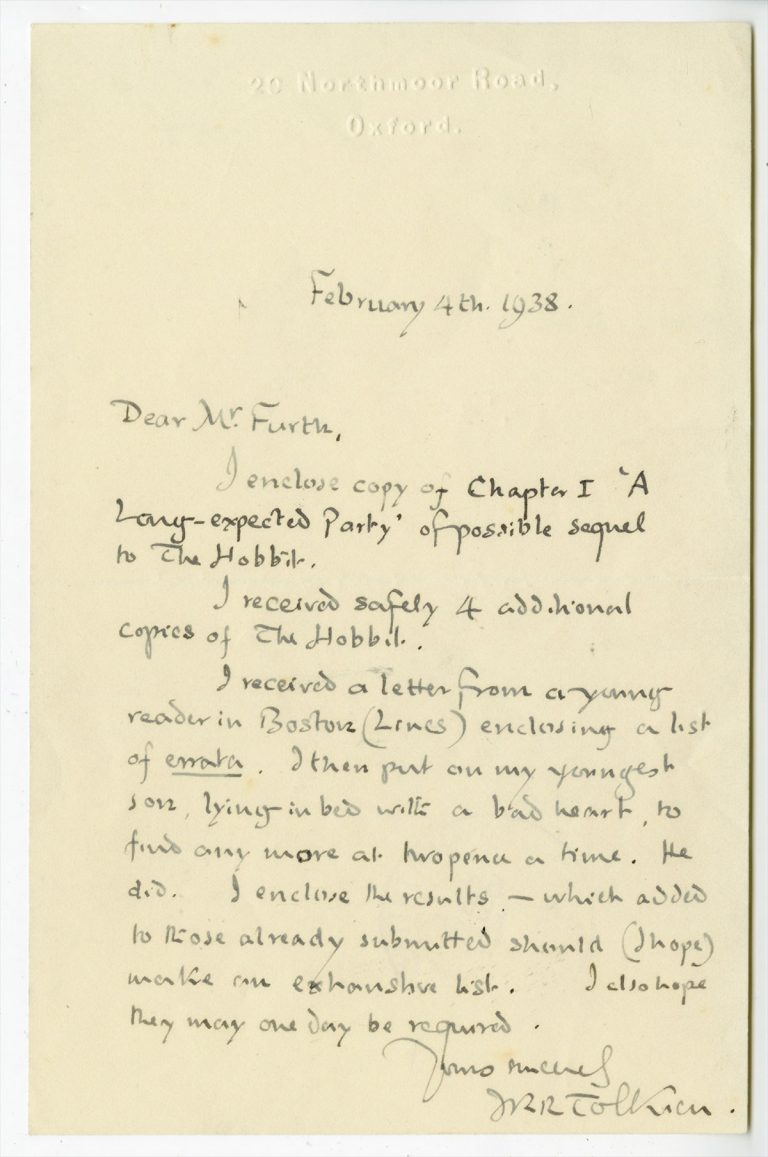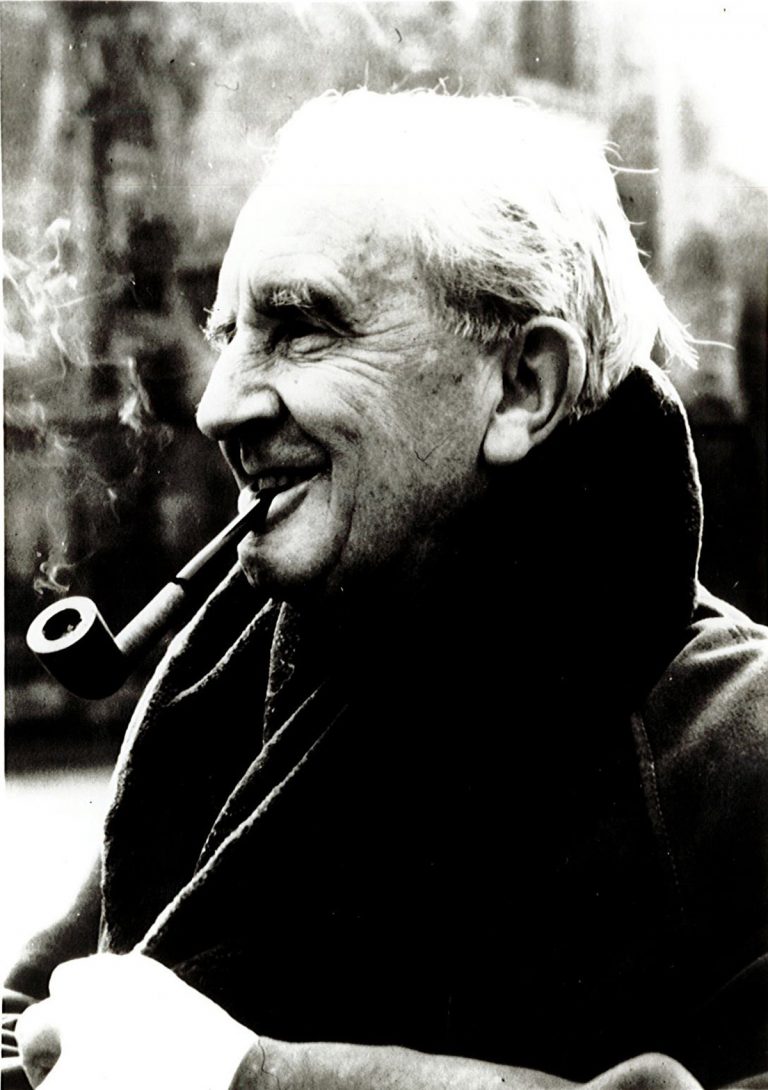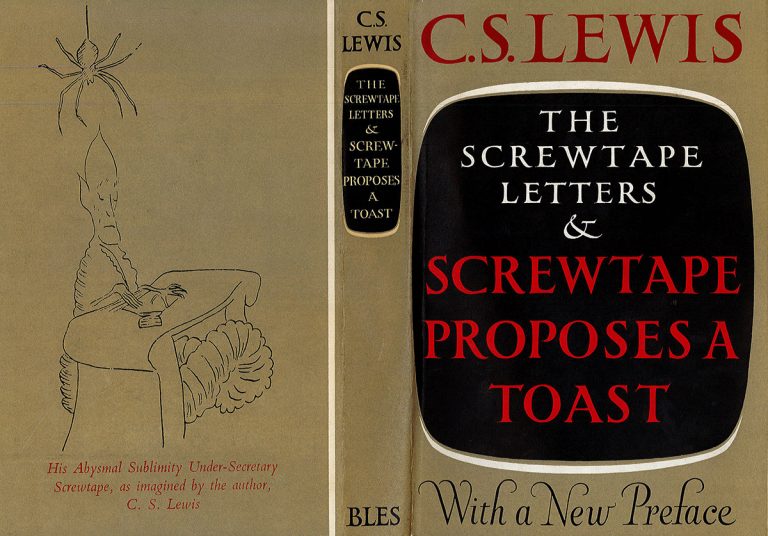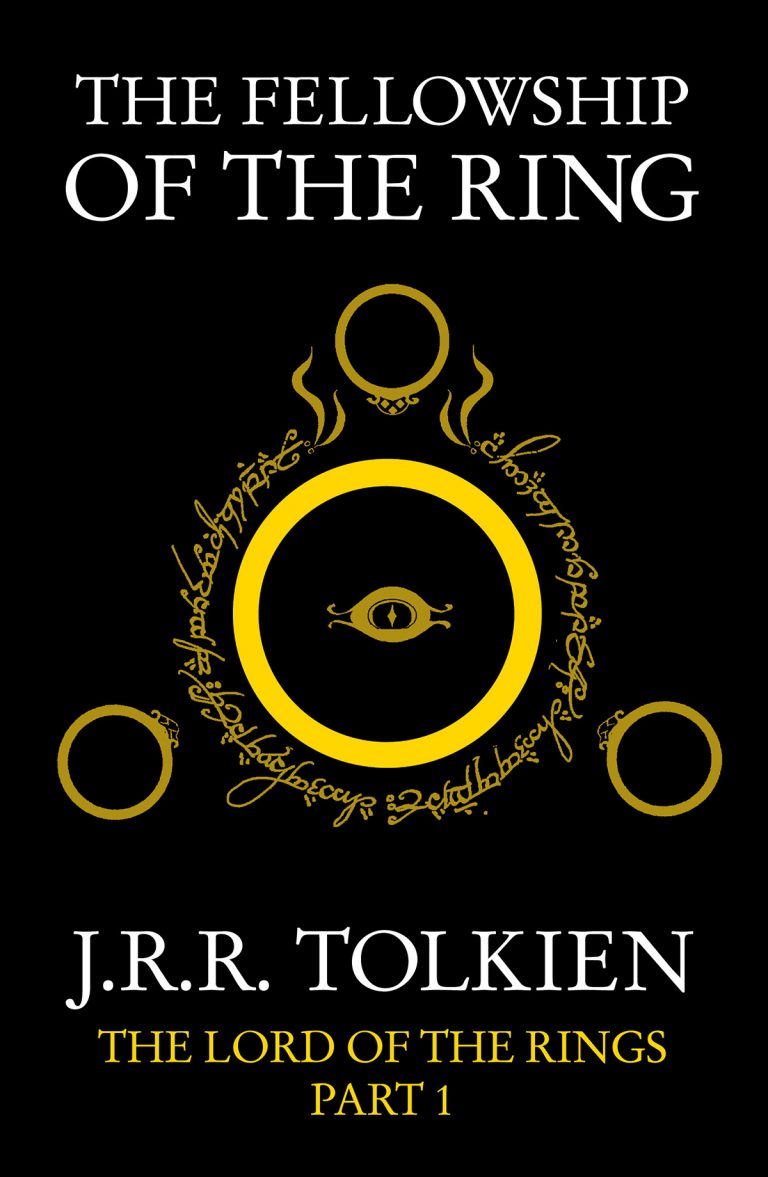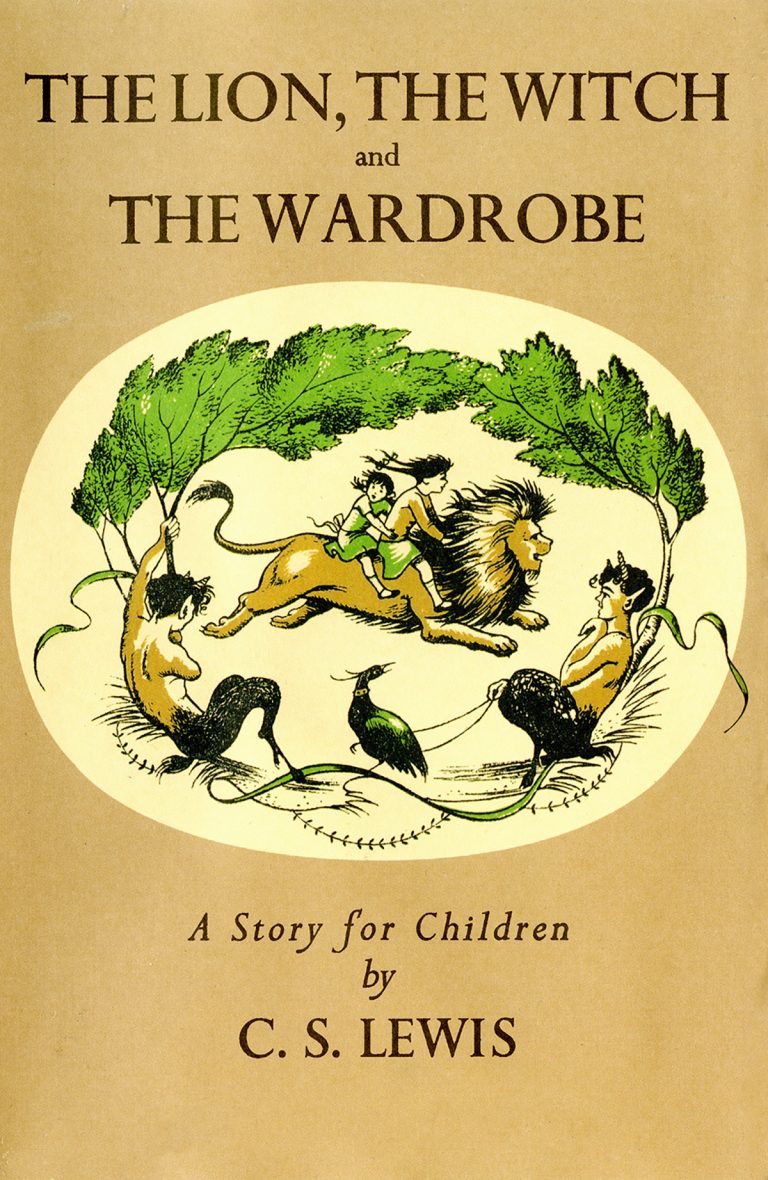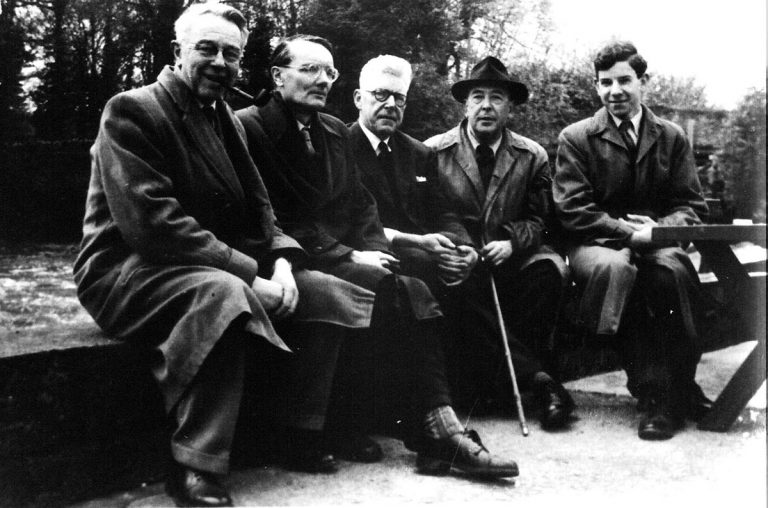Explore significant moments in HarperCollins history
Image courtesy of The Tolkien Estate
A letter from J. R. R. Tolkien to his editor regarding the first chapter of his “sequel” to The Hobbit, titled “A Long-expected Party”—which would become the first chapter of The Fellowship of the Ring.
The Hobbit
In October 1936, Stanley Unwin, chairman of British publishers George Allen & Unwin (later acquired by HarperCollins), received a children’s book submission. Unwin believed strongly that children were the best judges of children’s literature, so he gave the manuscript to his ten-year-old son, Rayner. For the agreed sum of one shilling, the boy read the book and produced a report for his father:
“Bilbo Baggins was a hobbit who lived in his hobbit-hole and never went for adventures, at last Gandalf the wizard and his dwarves persuaded him to go. . . . This book, with the help of maps, does not need any illustrations it is good and should appeal to all children between the ages of 5 and 9.”
Within a year, Unwin published J. R. R. Tolkien’s The Hobbit, to wide—but not yet phenomenal—acclaim. He did ask Tolkien for a sequel almost immediately, but “it grew in the telling” and took the busy academic more than a decade to complete. He called it The Lord of the Rings.
